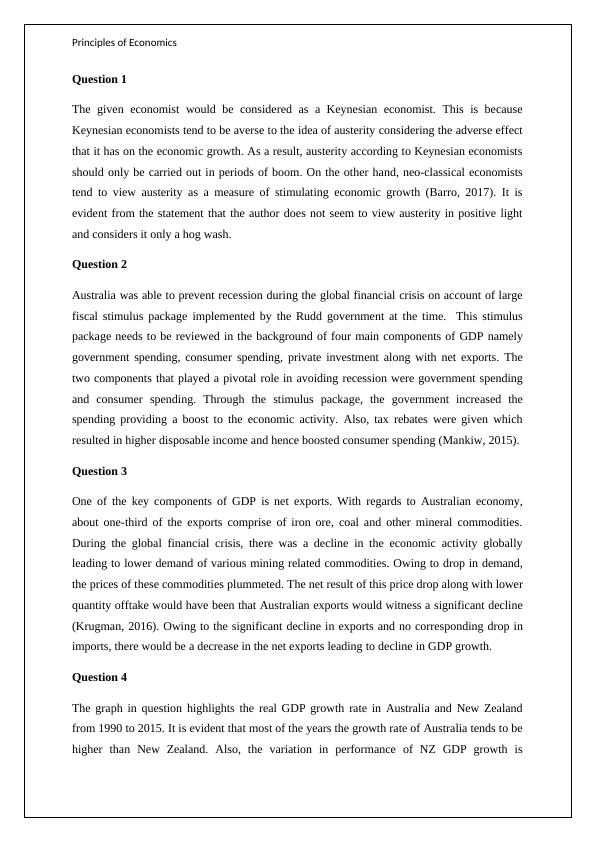Principles of Economics
New Zealand's economic performance is not as good as it seems when taken in context, according to John Quiggin.
4 Pages610 Words432 Views
Added on 2023-04-17
About This Document
This document provides study material and solved assignments for Principles of Economics. It covers topics such as Keynesian economics, fiscal stimulus, net exports, and the comparison of the Australian economy with other countries.
Principles of Economics
New Zealand's economic performance is not as good as it seems when taken in context, according to John Quiggin.
Added on 2023-04-17
ShareRelated Documents
End of preview
Want to access all the pages? Upload your documents or become a member.
How Australia Avoided Recession During the Global Financial Crisis
|8
|1599
|234
FNSINC601 Apply Economic Principles to Work in the Financial Services Industry
|29
|4366
|59
Comparative Analysis of Economic Performance of Australia and New Zealand
|17
|3943
|59
Macroeconomics: Brexit and Fiscal Policy, Factors Affecting Interest Rate Decision
|10
|2173
|271
Determinants of Aggregate Expenditure
|7
|1384
|67
Problem Essay Question Assignment 2022
|11
|2519
|14


